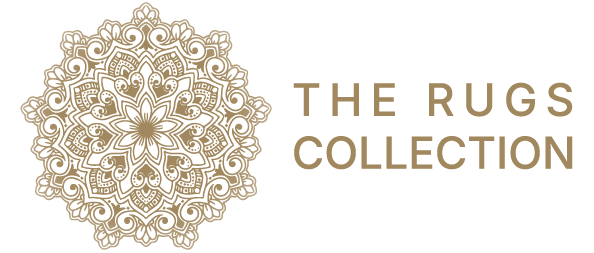What Rugs Are Best for Dogs?
Dogs and rugs don’t always get along. But with the right rug, you can have both a happy dog and a nice-looking home.
Let’s look at what makes a rug perfect for homes with dogs.
Why Regular Rugs Don’t Work with Dogs
Most rugs aren’t made with dogs in mind. Here’s what goes wrong:
Dogs scratch and dig. Their claws can pull threads and damage delicate weaves.
Accidents happen. Even house-trained dogs sometimes have mishaps. Regular rugs soak up smells and stains.
Dogs shed hair constantly. This hair gets stuck deep in the rug fibres and is hard to remove.
They track in mud and dirt. Dogs don’t wipe their feet at the door.
They chew things. Puppies especially like to nibble on rug corners and fringes.
What Makes a Dog-Friendly Rug?
The best rugs for dogs have certain features that help them survive pet life.
Easy to clean is the most important thing. You need to be able to wash away accidents quickly.
Durable materials that won’t fall apart when dogs play, scratch, or run around.
Stain-resistant so spills and accidents don’t leave permanent marks.
Low pile or flat weave so dog hair doesn’t get trapped deep inside.
No loose parts like fringes that dogs might chew on.
Quick drying so wet spots don’t turn into smelly problems.
The Best Materials for Dog Owners
Some rug materials work much better than others when you have dogs.
Polypropylene is brilliant for dogs. It’s synthetic, stain-resistant, and easy to clean. Water-based stains just wipe away.
Nylon is very tough and handles lots of wear. It resists stains and cleans up well.
Polyester is another good synthetic option. It’s soft but durable, and most stains come out easily.
Cotton works if it’s machine washable. You can throw the whole rug in the washing machine when needed.
Indoor-outdoor rugs are perfect. They’re made to handle weather, so they definitely handle dogs.
Materials to Avoid
Some rug materials are terrible choices when you have dogs.
Wool soaks up smells and stains. It’s expensive to clean and can shrink if it gets too wet.
Silk is far too delicate. Dog claws will destroy it quickly.
Jute and sisal absorb odours and are hard to clean properly.
High-pile shag traps everything – hair, dirt, smells, and food. It’s impossible to keep clean.
Delicate hand-woven rugs are too precious to risk with pets.
Size and Placement Matter
Think about where you put your rug and how big it is.
Smaller rugs are easier to clean and replace if something goes wrong.
Multiple small rugs work better than one large expensive one. If one gets damaged, you only replace that section.
Avoid putting rugs under food and water bowls. This area gets messy quickly.
Entry areas need very tough, washable rugs because dogs bring in dirt from outside.
Living areas can have nicer rugs, but they still need to be pet-friendly.
Washable Rugs Are Your Friend
Being able to throw your rug in the washing machine changes everything.
Machine-washable rugs let you deep-clean whenever needed. No expensive professional cleaning.
Quick wash cycles mean your rug is back in use the same day.
Hot water washing kills germs and removes odours completely.
High heat drying also kills any bacteria or parasites.
Regular washing keeps your rug fresh and extends its life.
Stain-Resistant Treatments
Some rugs come with special treatments that help with pet messes.
Scotchgard-type treatments make liquids bead up instead of soaking in.
Anti-microbial treatments help prevent bacteria and odours from building up.
Solution-dyed fibres have colour all the way through, so surface stains don’t show as much.
These treatments aren’t magic, but they give you more time to clean up accidents.
Patterns and Colours That Hide Problems
Smart design choices help hide the inevitable messes.
Darker colours hide dirt and hair better than light colours.
Busy patterns camouflage stains and wear better than solid colours.
Multi-coloured designs are more forgiving than single colours.
Avoid white or cream rugs unless you love doing laundry constantly.
Medium tones often work best – not so dark they show every bit of hair, not so light they show every stain.
Special Features to Look For
Some rugs have extras that make life with dogs easier.
Non-slip backing keeps rugs in place when dogs run across them.
Waterproof backing stops accidents from reaching your floor underneath.
Antimicrobial properties help prevent smells from building up.
UV resistance stops colours from fading if your rug gets lots of sunlight.
Rounded corners are safer than sharp corners that dogs might catch their claws on.
What About Rug Pads?
Rug pads are important when you have dogs.
Waterproof pads protect your floor if accidents soak through the rug.
Non-slip pads keep rugs from sliding when dogs play.
Breathable pads let air circulate and help prevent mould.
Washable pads can be cleaned along with your rug.
Avoid rubber pads if you have dogs that might chew them.
Training and Rug Care
You can teach dogs to be gentler with rugs.
Trim dog nails regularly to reduce damage from scratching.
Teach “off” commands so dogs know when they shouldn’t be on the rug.
Provide proper chew toys so dogs don’t nibble rug corners.
Clean accidents immediately before they set in and create permanent problems.
Vacuum regularly to remove hair before it gets ground in deep.
Budget-Friendly Options
You don’t need to spend lots of money on dog-friendly rugs.
Machine-washable cotton rugs are often quite affordable.
Indoor-outdoor rugs give good value because they last so long.
Flat-weave synthetic rugs cost less than hand-woven options.
Buy multiple small rugs instead of one expensive large one.
Look for sales at retailers like The Rugs Collection that offer quality options.
When to Replace Your Rug
Even the best dog-friendly rugs don’t last forever.
Replace when odours won’t come out no matter how much you clean.
Replace when the backing starts breaking down and the rug won’t lie flat.
Replace when there’s visible damage like holes or badly frayed edges.
Replace when it becomes a health concern – some old stains can harbour bacteria.
Don’t feel guilty about replacing rugs. It’s part of having pets.
Different Dogs, Different Needs
Consider your specific dog when choosing rugs.
Large dogs need tougher rugs that can handle more wear.
Small dogs might be fine with slightly more delicate options.
Older dogs might have more accidents, so easier cleaning is crucial.
Puppies will probably destroy anything nice, so go for cheap and replaceable.
Well-trained dogs give you more rug options than problem dogs.
Room-by-Room Guide
Different rooms need different approaches.
Living rooms can have nicer dog-friendly rugs since they’re used more carefully.
Kitchens need rugs that handle food spills as well as pet messes.
Entries need the toughest, most washable rugs you can find.
Bedrooms might work with softer options if dogs are well-behaved there.
Avoid rugs in areas where dogs eat or where accidents are common.
The Bottom Line
The best rug for dogs is one you won’t cry over if it gets damaged. It should be easy to clean, tough enough to handle daily life, and priced so you can replace it when needed.
Synthetic materials, washable options, and practical patterns are your friends. Save the expensive, delicate rugs for when your dog days are behind you.
Remember, you can have a nice home with dogs. You just need to be smart about your choices. The right rug will survive pet life and still look good.



